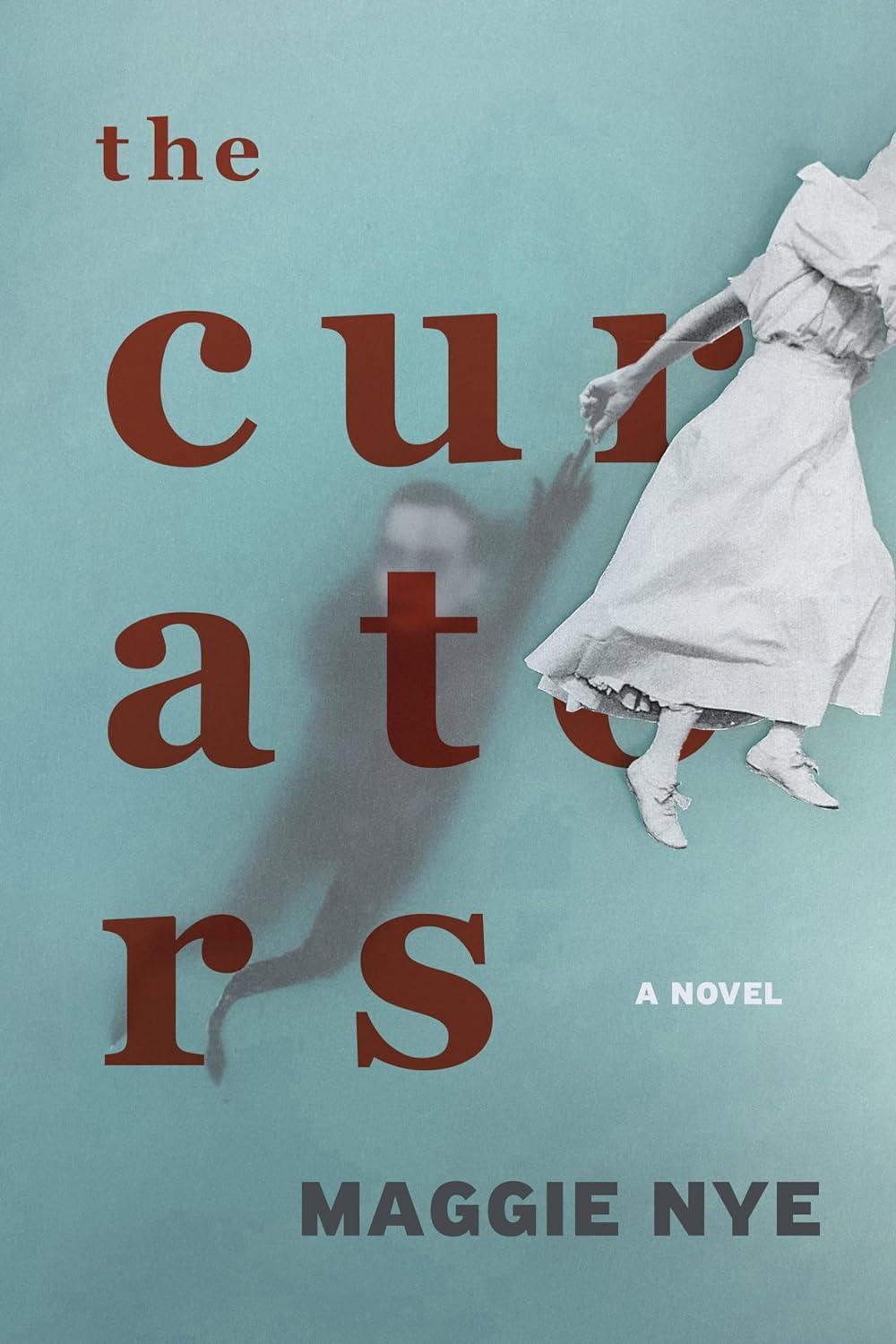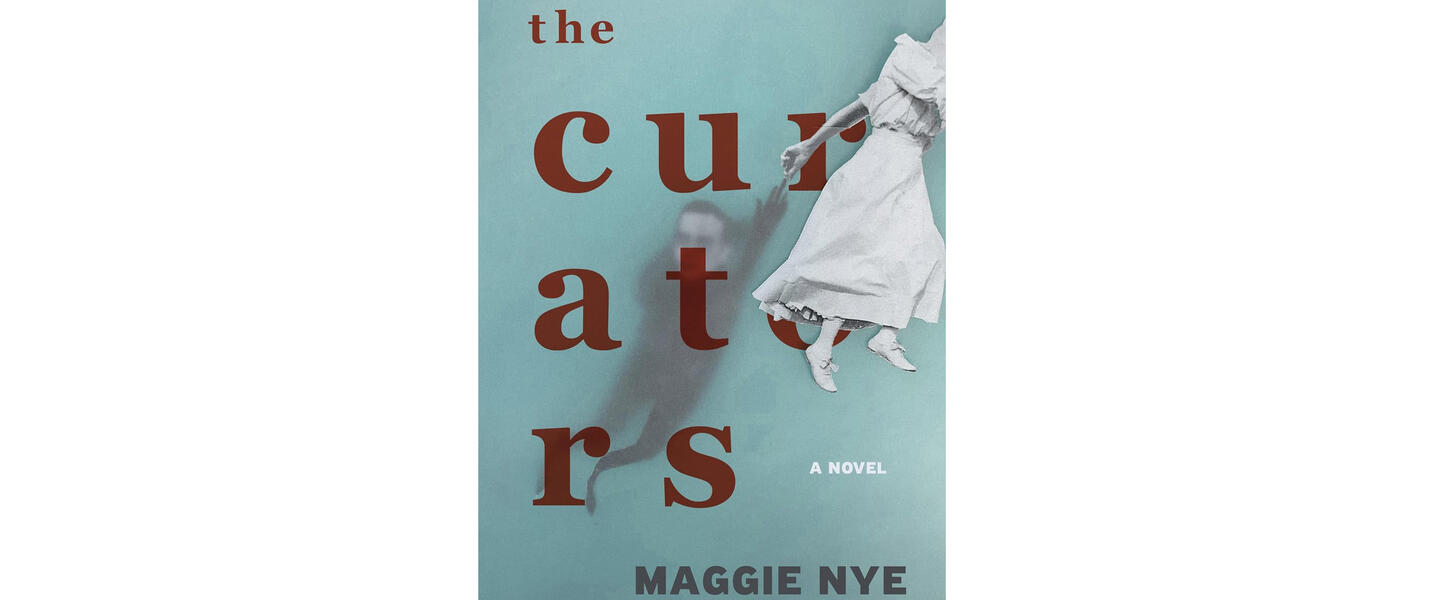
Section Branding
Header Content
The Curators by Maggie Nye
Primary Content
Violence haunts 1915 Atlanta and so does the golem a group of girls creates. A dark, lyrical blend of historical fiction and magical realism, "The Curators" examines an underexplored event in American history through unlikely eyes. All of Atlanta is obsessed with the two-year-long trial and subsequent lynching of Jewish factory superintendent Leo Frank in 1915. None more so than thirteen-year-old Ana Wulff and her friends, who take history into their own hands—quite literally—when they use dirt from Ana’s garden to build and animate a golem in Frank’s image.

Orlando Montoya: Coming up in this episode.
Peter Biello: The long story short here is that the mob was furious — wanted to defend Mary Phagan's quote unquote "honor."
Maggie Nye: She's become this figure that's completely unknowable, because all of the sort of recollections of her in the way that she's memorialized analogized revolve around her beauty.
Orlando Montoya: It's 1915. The Black and the Jew are not going to get a fair shake.
Peter Biello: Right. Right.
Orlando Montoya: This podcast from Georgia Public Broadcasting highlights books with Georgia Connections hosted by two of your favorite public radio book nerds, who also happen to be your hosts of All Things Considered on GPB radio. I'm Orlando Montoya.
Peter Biello: And I'm Peter Biello. Thanks for joining us as we introduce you to authors, their writings, and the insights behind the stories mixed with our own thoughts and ideas on just what gives these works the Narrative Edge. Orlando, I read something I need to tell you about.
Orlando Montoya: What is it?
Peter Biello: It's a book called The Curators by Maggie Nye. It came out in June. And it's about a moment in Georgia history that I don't think many people remember.
Orlando Montoya: All right. Well, I know a lot about Georgia history, so maybe — maybe I have. Go ahead.
Peter Biello: Yeah, you might know about this. First question on this Georgia history test: Who was Leo Frank? Do you know that name?
Orlando Montoya: Leo Frank. He was a Jewish man who was executed somehow, or he got very violently killed.
Peter Biello: Yeah. Okay. Very good. Yes. He was — he was lynched by a mob. He was convicted of a crime. Mary Phagan; is that a name you're familiar with?
Orlando Montoya: No. That I don't know.
Peter Biello: Mary Phagan was killed, and Leo Frank was convicted of her murder. And the details of the case, the story of the murder and the trial and the outcome have the makings of a true crime podcast. I should mention before we talk about The Curators, that this moment in Georgia history is the backdrop for a fictional story. The Curators is not a novelization of the Leo Frank/Mary Phagan story. It's about a friendship among adolescent girls. It's about obsession, specifically obsession with Leo Frank. And it includes a bit of magic, too.
Orlando Montoya: Well, since this is taking a very serious subject and fictionalizing, and I'm very interested in how this happens. And with magic?
Peter Biello: Yeah, magic. I mean, we will get to the magic, but let me talk a little bit about, for those who aren't familiar with what allegedly happened that night that Mary Phagan was killed. So Mary Phagan, she was a worker at the National Pencil Factory and was almost 14 years old when she was murdered and sexually assaulted in the basement of her workplace. There were various suspects investigated. The biggest names were Leo Frank, Northern Jewish superintendent, and a Black janitor named Jim Conley. So. So this was 1915, right? Newly industrializing South. And, when we spoke on GPB, Maggie Nye described why this murder in particular struck such a nerve with — with people in the South and in the Atlanta area in particular, because this was in Atlanta. Leo Frank was managing this factory that employed women and employed Black workers.
Maggie Nye: Bodies that had been under the control, formerly, of white men, were now kind of — their, their time, their bodies, their labor and the capital they produce is kind of changing hands. And this, this created a lot of anxiety and confusion. And racist stereotypes emerged to sort of engulf this entire story.
Peter Biello: So it's a tabloid sensation, in part because lots of white Southern anxiety about changes in the South, socially, demographically, that kind of thing.
Orlando Montoya: So it's 1915. The Black and the Jew are not going to get a fair shake.
Peter Biello: Right. Right. And so ultimately, Leo Frank, while he was convicted of the murder, he was sentenced to die by hanging, but his sentence was commuted by Gov. Slayton.
Orlando Montoya: He commuted it? I don't know that part of the story.
Peter Biello: Yeah, yeah. I asked Maggie Nye why Gov. Slayton would feel compelled to commute his sentence.
Maggie Nye: Well, there was a lot of public support for Frank.
Peter Biello: So it was based more on political whims rather than the governor had a sense that the evidence wasn't quite there?
Maggie Nye: Umm.... I —
Peter Biello: Or hard to say from this vantage point.
Maggie Nye: Yeah, I would say. I would say it's difficult to say. I think it's probably that depends a lot on whose history you're reading. The evidence was tampered with. Mary Phagan's body was dug up, like, three times. There was also a strong sense that, antisemitism was heavily influencing the— the case.
Peter Biello: The long story short here is that the mob was furious — wanted to defend Mary Phagan's quote unquote, "honor." White Southern womanhood was kind of central to her story.
Orlando Montoya: We've heard that before.
Peter Biello: Yeah. Yeah. So, so, Leo Frank was — was lynched by this mob in Marietta, which I should add, like, Maggie and I also talked a little bit about how over the years, myths have contributed to that mob being made up of, you know, the backwoods yokels when really she described the mob as — as the who's who of Marietta. Like, these were the muckety muck who were — were influential people. And they — they made this happen.
Orlando Montoya: But getting back to what I was asking before: You know, we're talking about a mob. We're talking about a lynching. We're talking about very serious things. What made this story so compelling for Maggie Nye, that she would use it for a lifting off point for a novel?
Peter Biello: Well, for Maggie Nye, Mary Phagan was particularly fascinating because she'd kind of turned into a myth.
Maggie Nye: But I think, you know, she's become this figure that's completely unknowable, because all of the sort of recollections of her in the way that she's memorialized and elegized revolve around her beauty. She's always called "pretty little Mary Phagan" or "little Mary Phagan." These — these diminutives that crystallize her forever in this kind of marbled white Southern womanhood, that I find fascinating.
Orlando Montoya: So that's the historical context of the book. So we're going to use that to launch off into a story. What's the story?
Peter Biello: So there's these teen girls around Mary Phagan's age, a group of five of them, and they form this intense group friendship that's founded on their obsession with Leo Frank. Leo Frank was a member of their temple. So they feel some closeness to him. They remember seeing him around, so that later, when he's in the news, they ... they had some kind of connection to him. And they use their obsession with him to write themselves into their story to some extent. And their friend group is governed by a bunch of little rules that they've created that each of them has to follow.
Orlando Montoya: And so what were some of those rules?
Peter Biello: Well, the first rule is that they're never without him. They always have a picture of Leo Frank close to their hearts, literally, like held in their shirts, except when bathing. But I'm going to quote the book here. "We were working on a method of waterproofing to eliminate that exception." There were other rules: They call themselves the Felicitous Five, and they said the "Felicitous Five shall meet every day outside of Jacobs Pharmacy to discuss new developments." Rule number three: "Each of us must immediately share whatever she learns through necessary eavesdropping about Leo Frank, the murdered factory girl Mary Phagan, and other important figures pertaining to the story." So they're about a bunch of rules that these these girls force each other to follow. And it's just — I thought it was a really cool way to — to link these girls and give them a sense of camaraderie.
Orlando Montoya: And who's the narrator of the story?
Peter Biello: So this book does something I haven't seen too often in fiction. Faulkner did it in A Rose for Emily. Jeffrey Eugenides did it in The Virgin Suicides. There are sections narrated as "we": I just quoted that sentence "We were working on a method of waterproofing to eliminate that exception." You know, it's not a specific member of this group of five girls. It's of — a voice conjured out of their collective.
Orlando Montoya: Interesting.
Peter Biello: Yeah. It's it, you know, to be honest, it took me a minute when I was reading this to figure out where it was coming from, but once I did, I, you know, it's easy to get the hang of what's happening. But then there are chapters where the narrative lens shifts to just Ana Wulff. She's one of the five girls, and her story kind of takes over after the group of girls creates a golem.
Orlando Montoya: Okay, I don't know the word golem.
Peter Biello: Okay, that's the magic I was talking about, right? So the the golem in Jewish folklore, was created out of mud or clay. They ... they, they're believed to be unfinished humans. And they come to life. And their creators can make them for specific purposes. Sometimes it's protection, but that's not what these girls want with the golem.
Maggie Nye: They construct this golem with the idea that he will look like Leo Frank, that they will produce a sort of Leo Frank that can be in communication with them. And that through doing this, they will have access to this absolute truth. And this is especially Anna's fascination that is denied to them, that they will know the true story.
Orlando Montoya: And does this golem work?
Peter Biello: No! It does not do what they want them to do. And this is kind of like, this is not a funny book necessarily, but this was kind of humorous in that, that the golem kind of is this little, barely ambulatory, like, lump of clay with a mouth, and it says words after it eats them. Like, it eats a Nabisco cookie. So now it can say the word "Nabisco," and it really doesn't do a whole lot. Ana Wulff keeps it in an attic closet. Kind of coaches it to learn new words, tries to make it an intelligent being. Because she has more access to this golem than the other girls, she gets a little more attention. But ultimately, we see that, well, this thing is not what she expected. It's now a concern she has to think about. And it can't be fully controlled. And it also causes a rift among this group of girls. And that's a point of tension, too, that I found really interesting and compelling. And this is kind of where I have to stop explaining the plot because, you know, you've just got to read what happens to this group of girls and what happens to this golem, because obsession like this doesn't go away quietly, I don't think. There needs — there needs to be a breaking point. And there is in this book. And I think that's what, Maggie Nye does really well.
Orlando Montoya: Okay, so what gives the book the Narrative Edge?
Peter Biello: Well, I'll start with the ending, because the ending is completely bonkers.
Orlando Montoya: You're not going to give it to me.
Peter Biello: I can't, I can't. But you got to experience it. And it's just — like I say, bonkers. And I mean that in the best possible way. Like, it's — it's so cool, right?
Orlando Montoya: All right. You got me hooked.
Peter Biello: You don't want to get to the end of the book, a book as strange as this, and have something ordinary kind of wrap things up. I think this was the only logical way to end things. And I think it was great. And, you know, it follows no formula. I love that this is the story of an obsession and where it takes these girls. It's also a story of adolescent friendships, specifically friendships between young girls. But the obsession part, that was what was most resonant to me. I love how well-drawn some of these scenes are. There's a lot of tension in the Wulff household, and that is rendered beautifully. Overall, I think this was a concise, compelling, really emotionally wrought story that I think is worth reading.
Orlando Montoya: Well, as someone who's interested in Georgia history a lot, I think this sounds very interesting to me. I'll check it out.
Peter Biello: Please do. It's The Curators by Maggie Nye.
Orlando Montoya: Thank you very much.
Peter Biello: Thank you Orlando.
Orlando Montoya: Thanks for listening to Narrative Edge. We'll be back in two weeks with a brand-new episode. This podcast is a production of Georgia Public Broadcasting. Find us online at GPB.org/NarrativeEdge.
Peter Biello: You can also catch us on the daily GPB News podcast Georgia Today for a concise update on the latest news in Georgia. For more on that and all of our podcasts, go to GPB.org/Podcasts.








